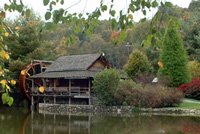INTRODUCTION
Fresh plant material is usually made up of between 80 and 95% water. So far, 16 elements have been identified as essential for plant growth. The plant cannot complete its life cycle without the element. Action of the element must be specific - no other element can take its place. The element must be directly involved (structure, constituent, enzyme activator, etc.)
Optimum plant growth is a function of nutrient concentration in the plant. There is a critical nutrient concentration below which growth is reduced/terminated. The adequate zone is above the critical concentration and provides maximum growth. The toxic zone is above the adequate zone, again resulting in reduced growth or death. THEREFORE, MORE IS NOT ALWAYS BETTER!
---Dr. Pat A. Rorabaugh, Controlled Environment Agricultural Center, Department of Plant Science, University of Arizona
LEARNING OBJECTIVES
- List the major and trace elements needed for plant growth
- Recognize common symptoms of essential element deficiencies
- Evaluate deficiency symptoms to determine if the element is mobile or immobile
- Explain the importance of pH in terms of nutrient availability.
- Explain how soluble salts can be used to infer nutrient concentrations from a media solution
- List and describe the general forms of fertilizers.
- Explain the advantages of chelated micronutrients
nonfertilizer (non-mineral) nutrients
primary macronutrient
secondary macronutrient
pH
pre-plant fertilization
post-plant fertilization
rule of 75
backflow preventer
proportioner
liming materials
dolomitic limestone
sulfur, iron sulfate, aluminum sulfate
slow-release fertilizer
polymer encapsulated fertilizers
slowly soluble fertilizers
urea
sulfur-coated fertilizer
chelated micronutrients
PourThru method
Press Extraction method
Foliar analysis
READING ASSIGNMENT
- Read Chapter 9 in your textbook. pages 303-366; this chapter is a long and detailed, so allow yourself extra time to complete the reading.
- Watch all the videos at the end of this section, you have seen a couple of these before. (THERE IS NO AUDIO LECTURE THIS WEEK because I think the growers tell this story best).
- Compare and contrast the plant nutrition program of Eurofresh, Kraft Farm, and Crossroad Farm in a few paragraphs. (20 pts).
- Choose the nutrition system from the greenhouse operation you liked best. Explain what it is about their nutrition plan that appeals to you in 4-6 answers. Back up your choice with information you have learned from the course. (10 pts). There is no right or wrong choice here. All these growers or businesses were selected for their knowledge and economically successful operations.
STUDY QUESTIONS (2 pts each)
- What is the purpose of a back flow preventer.
- Which essential elements come from the air and water?
- Explain what essential nutrients (elements) are impacted by the Cation Exchange Capacity of a soilless media.
- What essential nutrients are usually available in anionic forms that are easily washed out of the root substrate along with excess water?
- Explain the differences in nutrient availability caused by pH in soil and soilless media
- A purple color on the underside of the seedling leaves of marigolds and tomatoes is a sign of what two production problems.
- Describe the difference between a slow release fertilizer and a slowly soluble fertilizer.
- Name the essential nutrient at the center of every chlorophyll molecule.
- Fluorinated water can be a problem if you are producing members of a certain plant family. What is that family? You are probably very familiar with the ornamental members of this family. For extra credit name a commercially important vegetable crop member of this plant family that is sensitive to Fluorine.
- A petunia grower notices some purple discoloration on the underside of older leaves. Some leaves are brown and papery. What nutrient is likely deficient?
- The new buds of petunia plants are dying, but the new leaves near the bud look green and healthy although slightly misshapen. What nutrient is likely deficient?
- A petunia grower notices interveinal chlorosis on newly emerging leaves. What nutrient is likely deficient?
NEW THIS WEEK ONGOING Greenhouse Design Project (46 points). There will be new components of this project due each week. You can print off the handout for week one in PDF format here. NOTE: for 1.b. The hard copies will help you later on. You can turn in the links on your homework assignment.




No comments:
Post a Comment